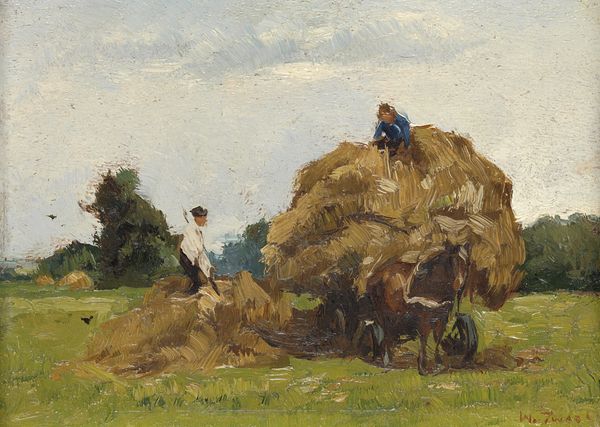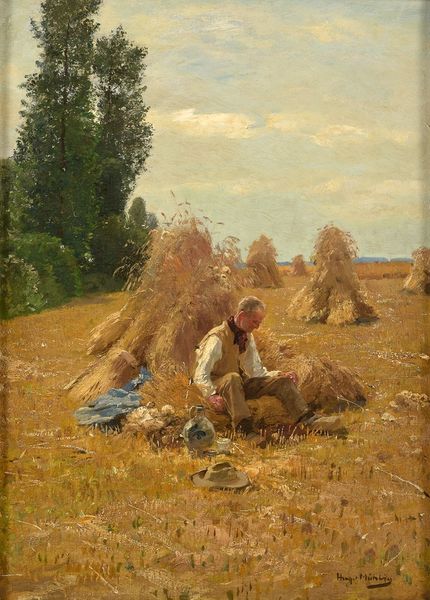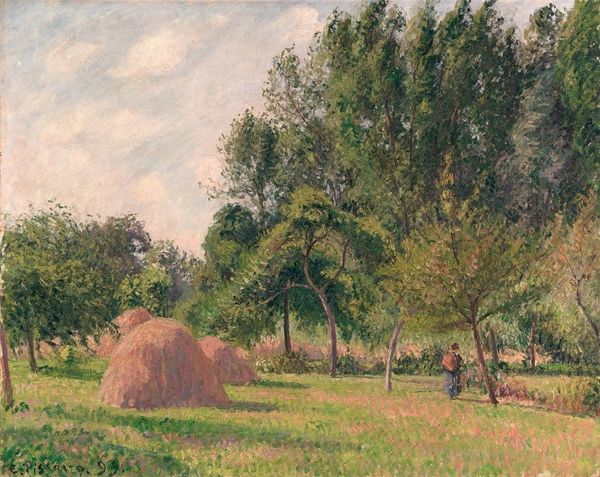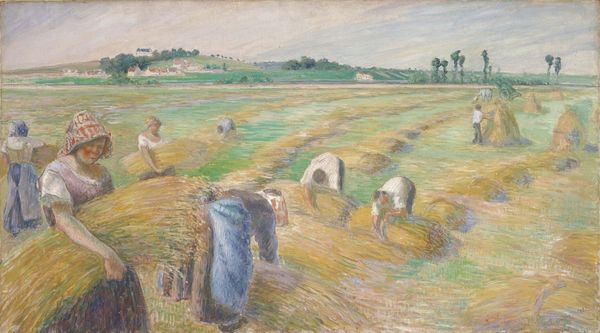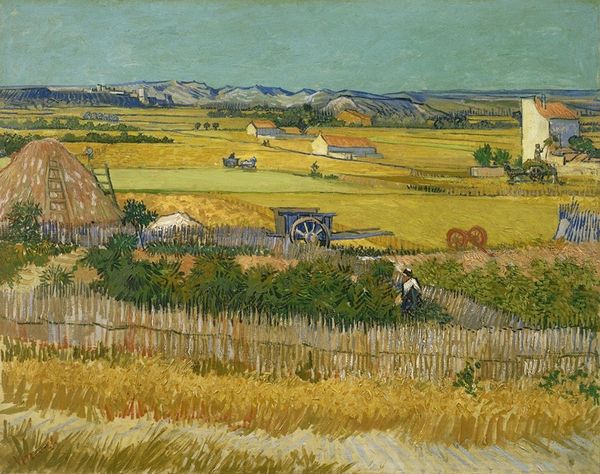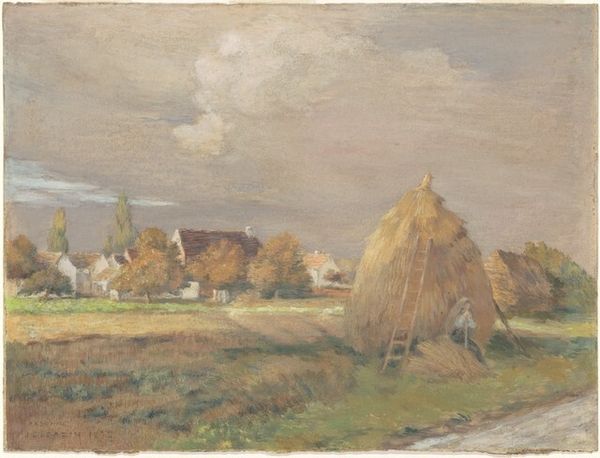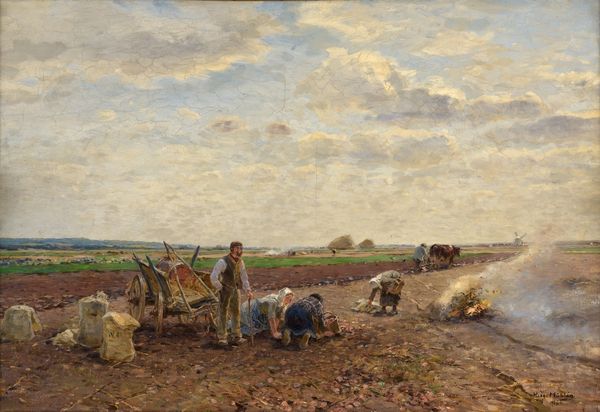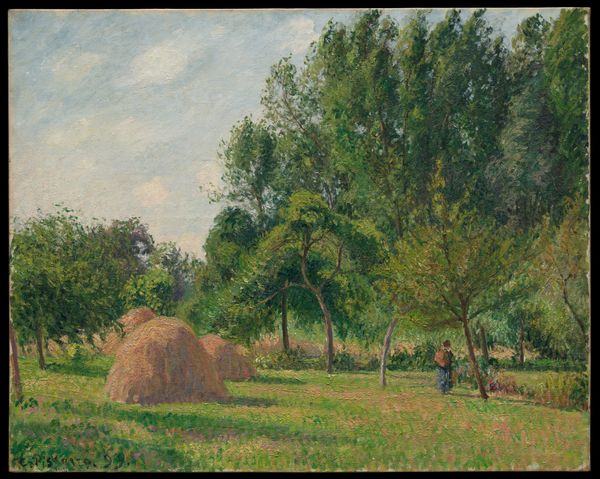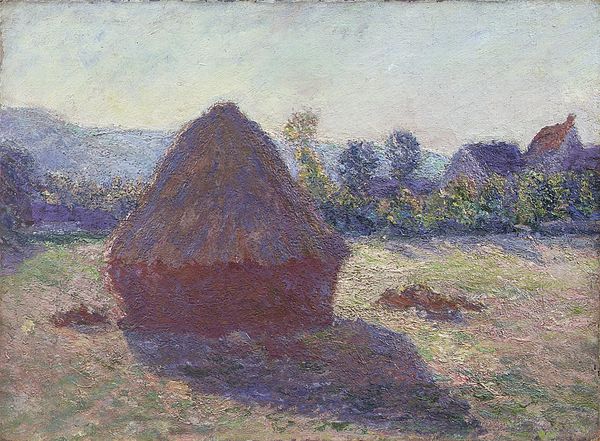
plein-air, oil-paint
#
impressionism
#
plein-air
#
oil-paint
#
landscape
#
oil painting
#
genre-painting
#
realism
Copyright: Public domain
Curator: Well, what do you make of this pastoral scene? The color palette feels muted and peaceful, but the subject matter strikes me as strangely melancholy. Editor: I see golden fields stretching to a soft horizon. We’re looking at Heywood Hardy’s “Corn Stooks by Bray Church,” completed in 1872. He seems to be capturing that fleeting moment between harvest and, well, whatever comes next. It definitely evokes a sense of nostalgia, perhaps even loss. The decline of agrarian life coinciding with the rise of industry and urbanization was certainly an ambivalent experience, particularly as experienced through a British colonial lens. Curator: I like that, ambivalence. It is more than just lovely, it's contemplative. Hardy’s treatment of the light is exquisite, like honey poured over the stooks. He painted en plein air, so each brushstroke must have been a race against the shifting light of the day. Did rural folk have time for "plein air" considerations? Perhaps this romantic framing serves a specific purpose... Editor: Absolutely. Let's not forget Hardy's social positioning and for whom the artwork was probably made for. What you call ‘lovely,’ others called necessary labor to put food on tables across class lines in an unequal system. By depicting the stooks bathed in a serene, almost ethereal light, it arguably idealizes agricultural labor, obscuring the socio-economic realities of rural life during this period of significant change and, frequently, exploitation. Curator: That said, I do get a sense of reverence for the land. Each stook stands like a little golden monument to nature's abundance. And the looming church in the background… I’m not religious, but that brings an element of…what, sanctuary? Faith? Editor: Yes, the church anchors the scene, providing a familiar sense of order amid what some perceived to be inevitable societal flux. You know, during that period, there were heated debates about land ownership, agricultural policy, and rural poverty. To see this now, from the perspective of a new age of climate crises, we have a sense of all that has changed...and what must. Curator: The fields are very still and contemplative... but in truth they could be filled with such drama, toil, and yes, exploitation. I like that contradiction—or at least, the possibility of it. It gives the painting depth, don't you think? Editor: It adds layers, certainly. Recognizing these contradictions challenges us to consider art’s role in both reflecting and shaping perceptions of power and labor.
Comments
No comments
Be the first to comment and join the conversation on the ultimate creative platform.

